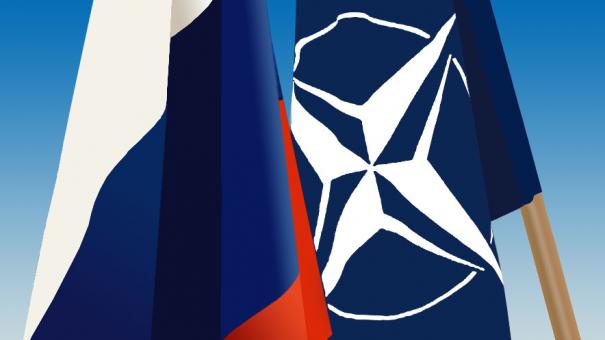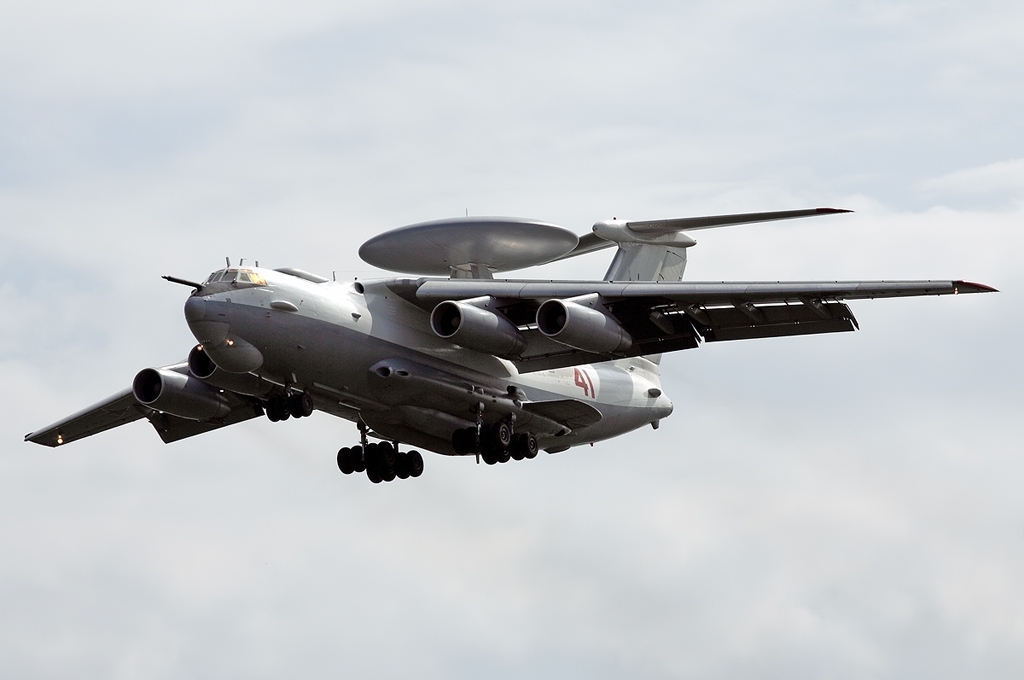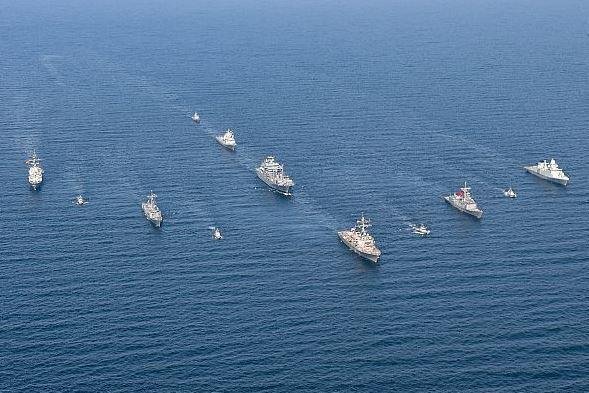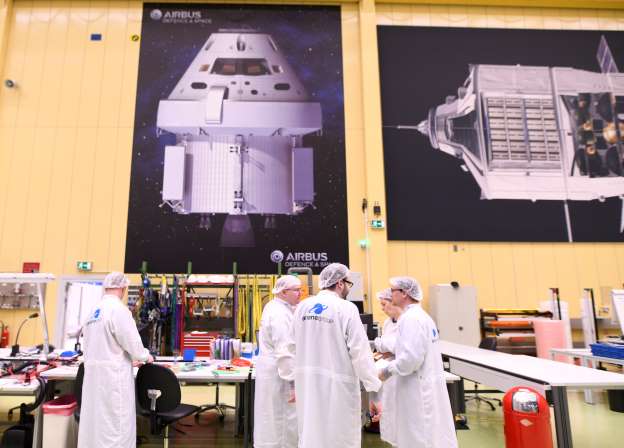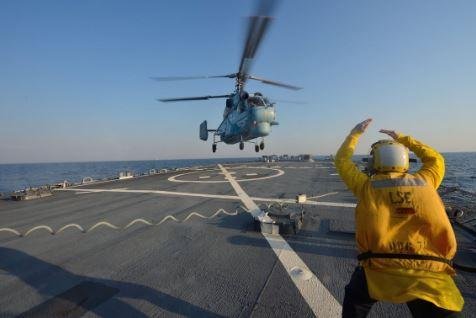U.S. Navy leads 18-nation exercise in Germany
By Allen Cone
June 10, 2019
View attachment 7844
Marines and sailors aboard the USS Mount Whitney, a Blue-Ridge class amphibious command ship, make final preparations Tuesday in Kiel, Germany, before participating in BALTOPS 19 . Photo by Cpl. Abrey Liggins/U.S. Marine Corps
View attachment 7845
A mechanic conducts a freshwater washdown Wednesday of a MH-60S Sea Hawk helicopter aboard the Blue Ridge-class amphibious command ship USS Mount Whitney in Kiel, Gerany, in preparation for Baltic Operations 2019. Photo by Mass Communication Specialist 3rd Class Jack D. Aistrup/U.S. Navy
View attachment 7846
The USS Fort McHenry, a Whidbey Island-class dock landing ship, prepares to moor Thursday at Naval Base Kiel-Tirpitzhafen in preparation for Baltops 2019. Photo by Cpl. Abrey Liggins/U.S. Marine Corps
View attachment 7847
The British Royal Fleet Auxiliary ship, RFA Argus, sits pier side at Naval Base Kiel-Tirpitzhafen, Germany, on Saturday in preparation for BALTOPs 2019. Photo by Cpl. Abrey Liggins/U.S. Marine Corps
View attachment 7848
The Turkish Gabya Class-frigate T.C.G. Gokova departs Naval Base Kiel-Tirpitzhafen, Germany, Sunday, in preparation for BALTOPS 2019 in Kiel, Germany. Photo by Mass Communication Specialist 2nd Class Joshua M. Tolbert/U.S. Navy
View attachment 7849
Ships are moored pierside at Naval Base Kiel-Tirpitzhafen, Germany, Friday in preparation for BALTOPS 2019. Photo by Mass Communication Specialist 2nd Class Joshua M. Tolbert/U.S. Navy
June 10 (UPI) -- The U.S. Navy's 2nd Fleet is leading BALTOPS, a two-week, 18-nation exercise that involves 8,600 personnel in Germany's Baltic Sea port of Kiel.
The 47th annual multinational Baltic Operations began Sunday and ends June 21 among the NATO allies.
BALTOPS, which is an annual maritime-focused exercise in the Baltic region, is one of the largest exercises in northern Europe "enhancing flexibility and interoperability among allied and partner nations," according to a Navy news release.
"No one nation can face today's challenges alone, we are much stronger together," Vice Adm. Andrew Lewis, commander of the U.S. 2nd Fleet, said. "Our partner and NATO alliances must continue to strengthen our deterrence and defense efforts and adapt through improving readiness and responsiveness."
Other participating nations are Belgium, Britain, Denmark, Estonia, Finland, France, Germany, Latvia, Lithuania, the Netherlands, Norway, Poland, Portugal, Romania, Spain, Sweden, Turkey.
The exercise will include 50 surface ships, 36 aircraft and two submarines. The USS Mount Whitney, a Blue-Ridge class amphibious command ship, and the USS Fort McHenry, a Whidbey Island-class dock landing ship, are among the ships participating.
"I think BALTOPS represents the habit we have made in operating in a coalition environment and in a multinational environment," said British Royal Navy Rear Adm. Andrew Burns. "One of the advantages, particularly in the NATO framework, as we operate together more and more we standardize our procedures so we now have a generation of military folk who are used to operating together with standard procedures."
Activities will include finding and destroying sea mines and submarines, using air defense and landing troops onshore as well as defense against attack from enemy navy vessels.
NATO's Air Operations Center in Uedem will direct all air operations.
"Baltic Sea is of vital strategic importance for the Alliance and is bordered by six NATO countries," NATO spokeswoman Oana Lungescu said in a news release. "BALTOPS is now in its 47th year and is not directed against anyone -- but clearly the security environment in the region has deteriorated after Russia's illegal annexation of Crimea."
Estonia, Latvia and Lithuania touch the Baltic Sea, and Finland, Norway and Sweden dip into the sea.
A scheduled landing is planned in Klaipeda, Lithuania, about 90 miles from where Russia maintains a naval base in Kaliningrad, USNI News reported.
The 2nd Fleet command in Norfolk, Va., was re-established last year amid Russia's growing naval activity in the Atlantic.
"BALTOPS tests how well our forces work together and shows that NATO can defend itself against any adversary," Lungescu said.
Also, BALTOPS will be among the first major training opportunities for the British-led Joint Expeditionary Force, which includes 3,000 personnel from several NATO and partner countries.
After BALTOPS, most ships participate in the Kielerwochen naval parade in Kiel, NATO said.
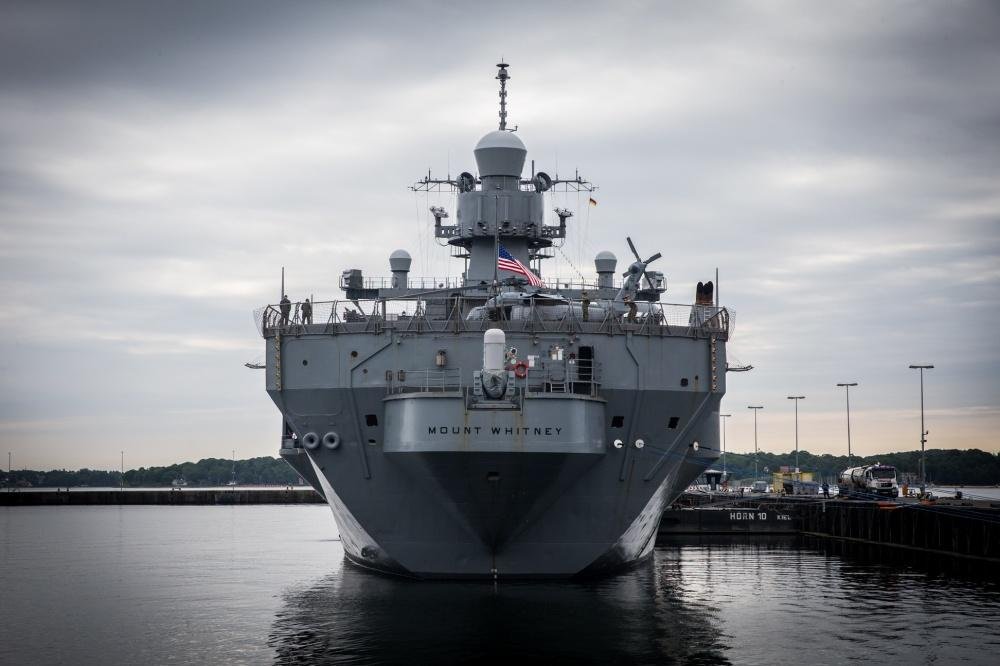
 www.upi.com
www.upi.com
By Allen Cone
June 10, 2019
View attachment 7844
Marines and sailors aboard the USS Mount Whitney, a Blue-Ridge class amphibious command ship, make final preparations Tuesday in Kiel, Germany, before participating in BALTOPS 19 . Photo by Cpl. Abrey Liggins/U.S. Marine Corps
View attachment 7845
A mechanic conducts a freshwater washdown Wednesday of a MH-60S Sea Hawk helicopter aboard the Blue Ridge-class amphibious command ship USS Mount Whitney in Kiel, Gerany, in preparation for Baltic Operations 2019. Photo by Mass Communication Specialist 3rd Class Jack D. Aistrup/U.S. Navy
View attachment 7846
The USS Fort McHenry, a Whidbey Island-class dock landing ship, prepares to moor Thursday at Naval Base Kiel-Tirpitzhafen in preparation for Baltops 2019. Photo by Cpl. Abrey Liggins/U.S. Marine Corps
View attachment 7847
The British Royal Fleet Auxiliary ship, RFA Argus, sits pier side at Naval Base Kiel-Tirpitzhafen, Germany, on Saturday in preparation for BALTOPs 2019. Photo by Cpl. Abrey Liggins/U.S. Marine Corps
View attachment 7848
The Turkish Gabya Class-frigate T.C.G. Gokova departs Naval Base Kiel-Tirpitzhafen, Germany, Sunday, in preparation for BALTOPS 2019 in Kiel, Germany. Photo by Mass Communication Specialist 2nd Class Joshua M. Tolbert/U.S. Navy
View attachment 7849
Ships are moored pierside at Naval Base Kiel-Tirpitzhafen, Germany, Friday in preparation for BALTOPS 2019. Photo by Mass Communication Specialist 2nd Class Joshua M. Tolbert/U.S. Navy
June 10 (UPI) -- The U.S. Navy's 2nd Fleet is leading BALTOPS, a two-week, 18-nation exercise that involves 8,600 personnel in Germany's Baltic Sea port of Kiel.
The 47th annual multinational Baltic Operations began Sunday and ends June 21 among the NATO allies.
BALTOPS, which is an annual maritime-focused exercise in the Baltic region, is one of the largest exercises in northern Europe "enhancing flexibility and interoperability among allied and partner nations," according to a Navy news release.
"No one nation can face today's challenges alone, we are much stronger together," Vice Adm. Andrew Lewis, commander of the U.S. 2nd Fleet, said. "Our partner and NATO alliances must continue to strengthen our deterrence and defense efforts and adapt through improving readiness and responsiveness."
Other participating nations are Belgium, Britain, Denmark, Estonia, Finland, France, Germany, Latvia, Lithuania, the Netherlands, Norway, Poland, Portugal, Romania, Spain, Sweden, Turkey.
The exercise will include 50 surface ships, 36 aircraft and two submarines. The USS Mount Whitney, a Blue-Ridge class amphibious command ship, and the USS Fort McHenry, a Whidbey Island-class dock landing ship, are among the ships participating.
"I think BALTOPS represents the habit we have made in operating in a coalition environment and in a multinational environment," said British Royal Navy Rear Adm. Andrew Burns. "One of the advantages, particularly in the NATO framework, as we operate together more and more we standardize our procedures so we now have a generation of military folk who are used to operating together with standard procedures."
Activities will include finding and destroying sea mines and submarines, using air defense and landing troops onshore as well as defense against attack from enemy navy vessels.
NATO's Air Operations Center in Uedem will direct all air operations.
"Baltic Sea is of vital strategic importance for the Alliance and is bordered by six NATO countries," NATO spokeswoman Oana Lungescu said in a news release. "BALTOPS is now in its 47th year and is not directed against anyone -- but clearly the security environment in the region has deteriorated after Russia's illegal annexation of Crimea."
Estonia, Latvia and Lithuania touch the Baltic Sea, and Finland, Norway and Sweden dip into the sea.
A scheduled landing is planned in Klaipeda, Lithuania, about 90 miles from where Russia maintains a naval base in Kaliningrad, USNI News reported.
The 2nd Fleet command in Norfolk, Va., was re-established last year amid Russia's growing naval activity in the Atlantic.
"BALTOPS tests how well our forces work together and shows that NATO can defend itself against any adversary," Lungescu said.
Also, BALTOPS will be among the first major training opportunities for the British-led Joint Expeditionary Force, which includes 3,000 personnel from several NATO and partner countries.
After BALTOPS, most ships participate in the Kielerwochen naval parade in Kiel, NATO said.

U.S. Navy leads 18-nation exercise in Germany - UPI.com
The U.S. Navy's 2nd Fleet is leading BALTOPS, a two-week, 18-nation exercise that involves 8,600 personnel in the Baltic Sea.

